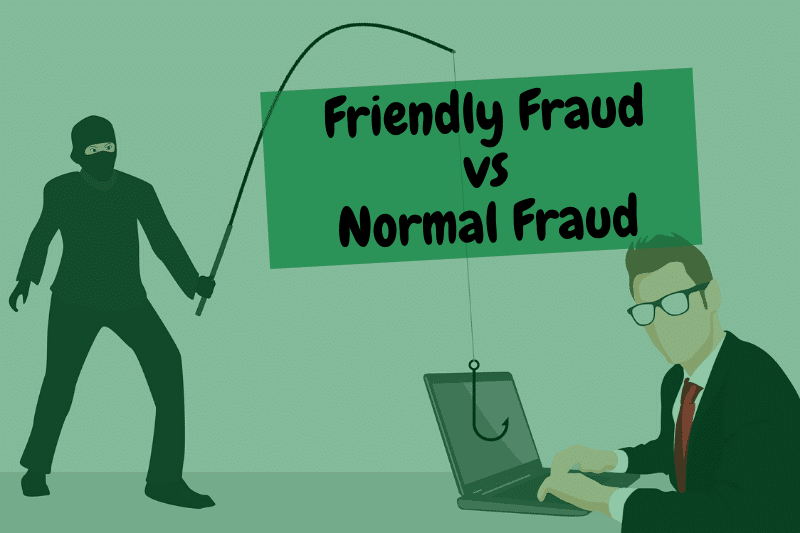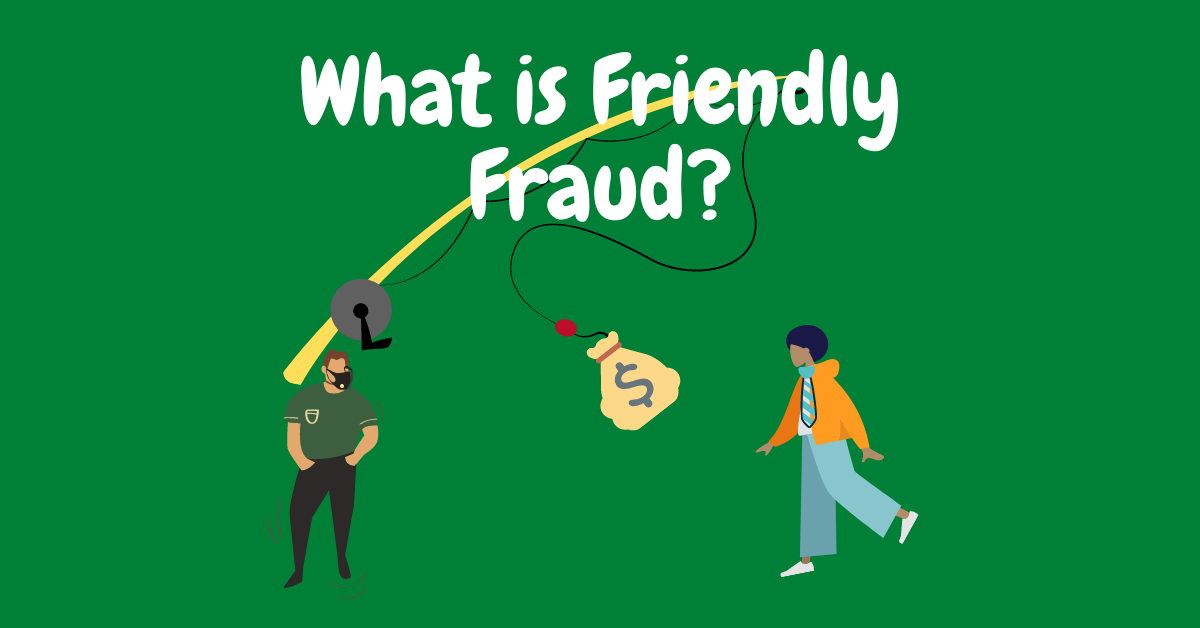If you’re a merchant, issuer, or consumer, you might agree that one of the most confusing terms that you may have come across is “friendly fraud.” Just by looking at how both of these words are paired together can already raise a lot of eyebrows. Think about it – how can fraud be friendly? It doesn’t make a lot of sense, does it? However, the truth is that it can’t. A merchant can encounter friendly fraud and say that it’s not a positive experience at all. Getting chargebacks from transactions that you think were legitimate can be frustrating as it will not only affect your income but your business as a whole. There are a lot of things to tackle when it comes to this type of issue. But before we get to that point, let’s begin by stating our official definition of this term:
“Friendly fraud,” otherwise known as fraud friendly, is a type of scam that happens when an individual had the knowledge and was complicit with – and somehow benefited from – a transaction on their account, even though they’ve already reported it as unauthorized. – Ethoca
It’s when people file for chargebacks even when they’ve already received the goods or service, claiming that they didn’t authorize such transaction. Every merchant considers this as a significant issue since it can affect their income and money generated into their company.
When Does Friendly Fraud Take Place?
In simpler terms, friendly fraud occurs when a customer tries to gain money back from a legitimate transaction by filing a fraud chargeback. Because of this, the bank refunds the consumer, believing that actual fraud has occurred. Constant chargebacks like this can be a problem if you’re trying to run a business since it keeps you from moving forward and increasing your income. As a merchant, it’s your job to find a way on how to deal with bogus chargebacks and make sure the progress of your business won’t be affected by it. This type of behavior is quite a serious issue for merchants. Friendly fraud is a trend, and its rate continues to grow, accounting for over 90% of all fraud cases in industries like digital services and goods. With this in mind, dealing with this problem and finding a way to solve is crucial.
If you’re still unsure about what friendly fraud means and how to deal with it, you’re in luck. We’re going to give you all the information you need to get familiar with what friendly fraud is and how you can tackle this problem.
How does Friendly Fraud Happen?
When a customer or cardholder files for a fraud claim, they must first give the bank all the right reasons to grant them a refund. To do so, this customer can cite a variety of problems; but, more often than not, they will claim that the transaction was unauthorized. With the zero-liability policies maintained by the issuer, the CNP (card not present) nature of e-commerce, and the Consumer Protection Regulations, issuers have been forced to endure this type of abuse and take cardholders at their word without any form of assurance. They will then mark what was supposed to be a legitimate transaction into a fraudulent one, which triggers the costly and time-consuming chargeback process.

Friendly Fraud Vs. Normal Fraud: What’s the Difference?
There are many differences between normal fraud and friendly fraud. The main difference being the identity of the perpetrator. With ‘normal fraud,’ the fraudster uses a stolen identity such as someone else’s credit card. They do this for financial or personal gain. With a ‘friendly fraud,’ the fraudster is the actual cardholder or someone who is authorized to use the cardholder’s account. The authorized person can be a family member or someone that isn’t an authorized user that has access to the information on the credit cards.
Is It Always ‘Unfriendly’?
As you may have already noticed by now, the term ‘friendly fraud‘ is a complete contradiction to what it actually means. In its most common form, customers will actively commit fraud to trick the system – which is also called “hostile friendly fraud.” The purpose of why customers do this is up for debate. But in most cases, they do it for personal gain.
Despite its reputation, there are also cases where customers got involved in a friendly fraud by accident. One instance includes parents mistakenly requesting fraud chargebacks for purchases that their children made on their credit card without their knowledge and consent. Another common scenario is when a customer or cardholder accidentally mistakes a genuine purchase for a fraudulent one.
As a result, the customer requests a chargeback for fraud because they don’t recognize a transaction made on their credit card, or the supplied merchant details on a bank statement. In some cases, they simply forgot about the purchase. It’s quite confusing for both customers and merchants, especially if the latter does not save records of business transactions in the form of an invoice. That’s why having an invoicing system like ReliaBills helps out tremendously.
Unfortunately, innocent cases such as the ones mentioned above can soon turn foul. Companies lacking the time or money to dispute chargeback frauds give customers the benefit of the doubt, which potentially transforms the once-innocent cardholder into a repeat fraudster.
The reason is due to the ease of the process. Claiming legitimate transactions as a fraud in this way can have serious downstream effects for merchants as the chargebacks can take its toll on your business and its ability to grow. That’s why, as a merchant yourself; you need to find a solution to control the credit that comes into your company. At the same time, you should also deal with this problem and prevent any customer or cardholder from getting away with this type of fraud. When someone makes a purchase from you, it’s your duty to record and store all the details and information so that you’ll have something to review once someone attempts to file for a chargeback.
Why is a Friendly Fraud So Serious?
Whether it’s purposeful or an accident, a friendly fraud never ends up in a positive outcome. Just imagine a customer you trusted making a random purchase from your company and, later on, ended up filing a chargeback claiming that they didn’t make such transaction. To put things into perspective, friendly fraud is comparable to physical shoplifting to the merchant – at least in terms of merchandise. This issue is a lot more problematic compared to a mere loss of goods. It deals with a customer that made a purchase and then tried to get their money back by filing a chargeback against you. If you don’t have a solid system in place, it’s going to be hard to tell if the customer is telling the truth or not. You will have your rights reserved in favor of the client’s interests in getting their money back. Most merchants end up complying with the chargeback demands.
Friendly fraud happens weeks, or even months, after the initial transaction. So it’s much harder to track them than if it was noticed at the time – like shoplifting. Furthermore, there are far more losses involved when it comes to friendly fraud. The merchant not only forfeits the price of their item, but they also lose money on shipping costs, payments for transaction processing, and chargeback fraud and representment fees along with potential increased declines from the issuer. In the end, a friendly fraud never results in anything good for both the customer and the merchant.
How to Prevent Friendly Fraud?
Fraud prevention is now a necessity for merchants and issuers. There are a series of measures that merchants and issuers can take to prevent friendly fraud from occurring and avoid any bogus chargebacks. Their customer service can be educated with this issue to make sure they can better provide a solution when it happens. Once a customer files for a chargeback, they can scour through the information and details that they have saved to determine if it’s a legitimate claim or a fraud.
Establishing collaborations between merchants and issuers in real-time can help deflect these types of claims by presenting detailed order information at the onset with the customer on the phone prior to the fraud being taken. By doing so, you’re preventing the customer from ever committing a friendly fraud since you’ve already outlined all of the goods or services that they purchased from you. So, once a customer’s files for a chargeback, you can tell if whether or not they’re telling the truth. Doing these extra steps can ensure a merchant like that he or show won’t have to deal with this type of problem constantly.
How ReliaBills Can Help with Friendly Fraud
ReliaBills is an online invoicing system that can tremendously help merchants and issuers avoid unwanted friendly fraud. By sending out invoices regularly, you’re informing your customers that they have purchased goods from you. That way; when someone files a fraudulent claim, you can revert to your invoices and see if they’re telling the truth or not. Our invoicing software creates professional invoices that can provide you and the recipient with a complete overview of the items that they purchased from your business. You can even customize your invoices and make them unique to your brand. Most of all, you can also schedule your invoices to make sure you get paid on time. That way, a merchant like you won’t have to deal with friendly fraud and, instead, focus on other areas of your business.


